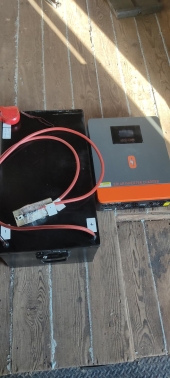


10 Podcast Review of the book Just Enough by Azby Brown
will be released to subscribers in:
soon!



 1
1




![Filename: 20190827_135857.jpg
Description: [Thumbnail for 20190827_135857.jpg]](/t/121551/a/87218/20190827_135857.jpg)
![Filename: 20190827_135845.jpg
Description: [Thumbnail for 20190827_135845.jpg]](/t/121551/a/87219/20190827_135845.jpg)




Country oriented nerd with primary interests in alternate energy in particular solar. Dabble in gardening, trees, cob, soil building and a host of others.
 3
3




 2
2




Sebastian Köln wrote:It looks to me like the connection between the wire and the fuse wasn't good (enough).




Argue for your limitations and they are yours forever.




"Study books and observe nature; if they do not agree, throw away the books." ~ William A. Albrecht




 1
1




 3
3








“The most important decision we make is whether we believe we live in a friendly or hostile universe.”― Albert Einstein




John Weiland wrote:Didn't want to create a separate thread for this topic and hope it's not inappropriate here.
We recently had new electrical service from our cooperative installed to a new outbuilding via a private electrician. This is overhead wire service from the cooperative's power pole to the new building to deliver 100 amp AC service. A building that was previously in a nearby location had collapsed this past spring and the coop had quickly removed the old overhead cable and wires as a safety measure. That cable and wires (aluminum, not copper) were simply coiled up after removal and stored over the summer with the idea that it could be used for the new building.
Well....the new electrician wanted to use their own cable and wiring for the new install. Soooooooo...now we are left with the previous cable (only a few years old, actually) and I'm wondering what it could be used for. As typical for overhead service, there is a high-tensile cable around which the two power wires are wrapped as they are supported along the run from the pole to the building: Can I just unwind the heavy-duty wires and use them for other heavy-load electrical projects? I'm accustomed to working with copper wiring but have never worked with aluminum for routine projects. Any reason why I should not do this and just recycle the wire instead? Thanks!




“All good things are wild, and free.” Henry David Thoreau

|
them good ole boys were drinking whiskey and rye singin' this'll be the day that I die. Drink tiny ad.
The new kickstarter is now live!
https://www.kickstarter.com/projects/paulwheaton/garden-cards
|





